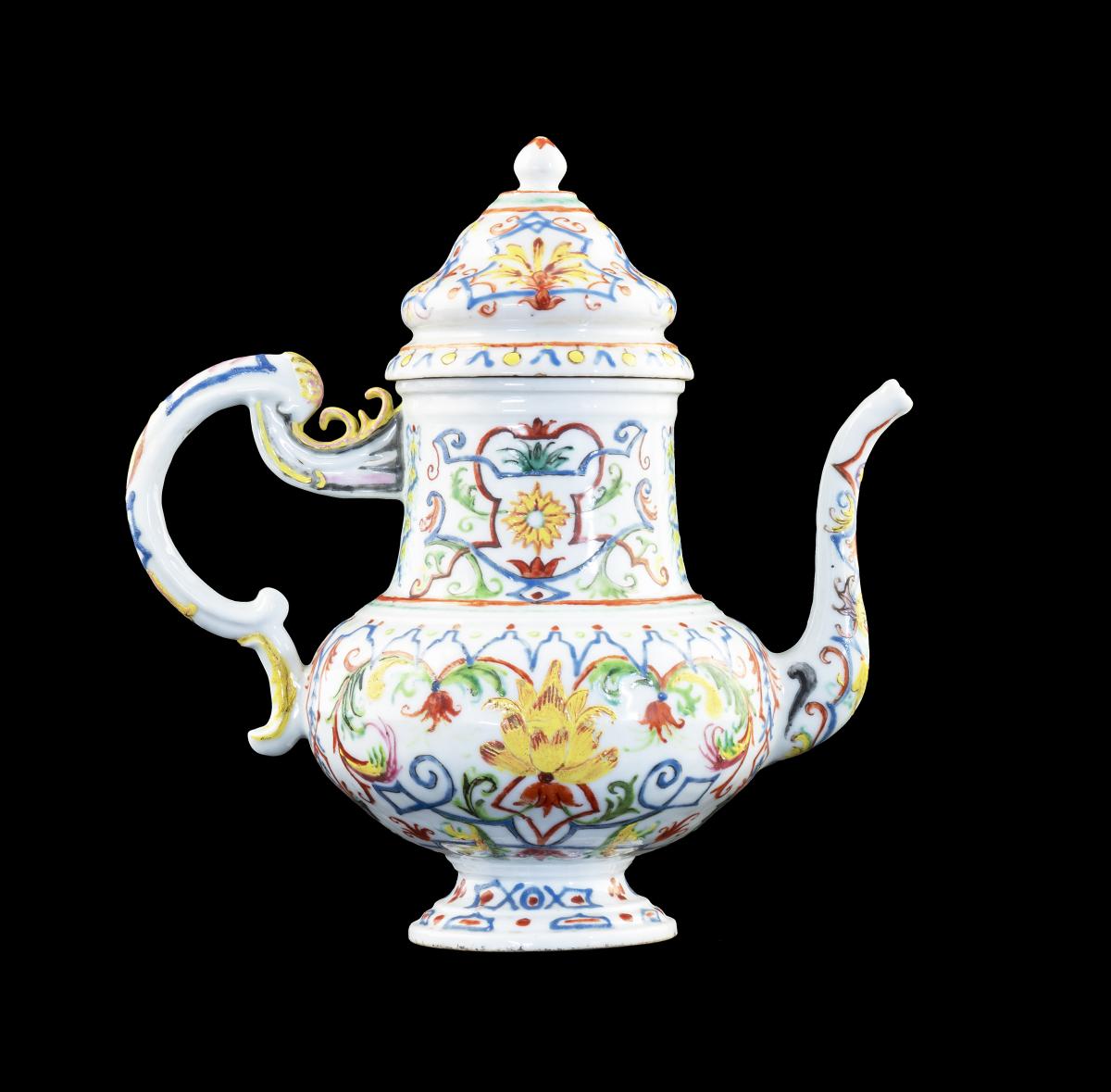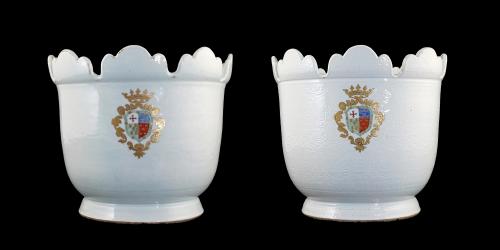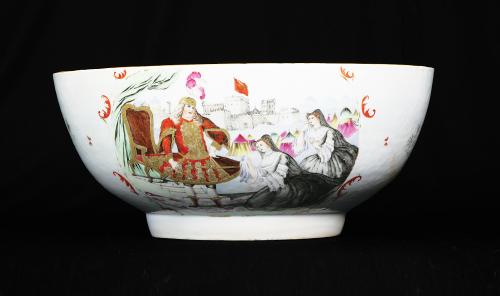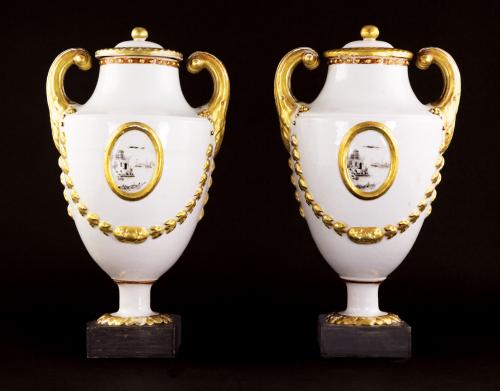

Price on application
This object is eligible for a Certificate of BADA Provenance
The BADA Standard
- Since 1918, BADA has been the leading association for the antiques and fine art trade
- Members are elected for their knowledge, integrity and quality of stock
- Our clients are protected by BADA’s code of conduct
- Our dealers’ membership is reviewed and renewed annually
- Bada.org is a non-profit site: clients deal directly with members and they pay no hidden fees
Chinese porcelain famille rose wine ewer after Vezzi porcelain.
Qianlong period circa 1740.
Italian, Portuguese or Spanish Market.
Height: 9¼ inches; 25cm.
A rare Chinese export wine ewer or coffee pot with slender serpentine spout and elaborate scroll handle, brightly enamelled primarily in yellow, blue, iron-red and shades of green, with touches of pink, with large stylised flower heads, strapwork, arabesques and acanthus leaves, the ogee domed cover similarly decorated below the bud finial.
The style and enamelling of this extremely rare piece are copied from the ceramics of the Italian Vezzi factory. The colouring and bold designs are distinctive and known on only a few services from this date, mainly for the Iberian market, some being known with Portuguese arms.
The Vezzi factory was set up in Venice in 1720 by the goldsmiths Franceso and Guiseppe Vezzi, enterprising businessmen and early practioners of the art of industrial espionage. Francesco had visited Vienna in 1719 and very likely made contact with Christophe Conrad Hunger an assistant in the Viennese porcelain workshops of Claude du Paquier. In 1721 Hunger moved to Venice and assisted the Vezzi brothers with their enterprise, using kaolin smuggled from Aue in Germany.
The Vezzi production of porcelain only lasted until 1727, with less than two hundred pieces surviving, mostly teapots, many with chinoiserie designs. As well as techniques for the manufacture of hard-paste porcelain Hunger’s defection also meant that the decorative style of Vezzi porcelains (and also this piece) was strongly influenced by the patterns of Du Paquier. They also appear to be influenced by the strap work designs of Jean Berain and the post-renaissance decorative friezes found on much Venetian furniture and frescoes.
The elaborate shape is taken from silver coffee services of the time and a few other pieces, probably from the same coffee service, are also known, including a teacaddy and wine cups.
References:
Buerdeley 1962, p83, tureen, cover and stand in similar decoration; Castro 1988, p87, three services with the arms of the Bishop of Oporto; Le Corbeiller 1973, a general discussion of these pieces; Cohen & Cohen 2001, p14-15 Nos 9, a pair of tazze with similar decoration, and No 10 a footed winecooler with almost identical decoration (see previous item in this catalogue).
Dimensions
Height: 9¼ inches; 25cmStock number
5977The BADA Standard
- Since 1918, BADA has been the leading association for the antiques and fine art trade
- Members are elected for their knowledge, integrity and quality of stock
- Our clients are protected by BADA’s code of conduct
- Our dealers’ membership is reviewed and renewed annually
- Bada.org is a non-profit site: clients deal directly with members and they pay no hidden fees




